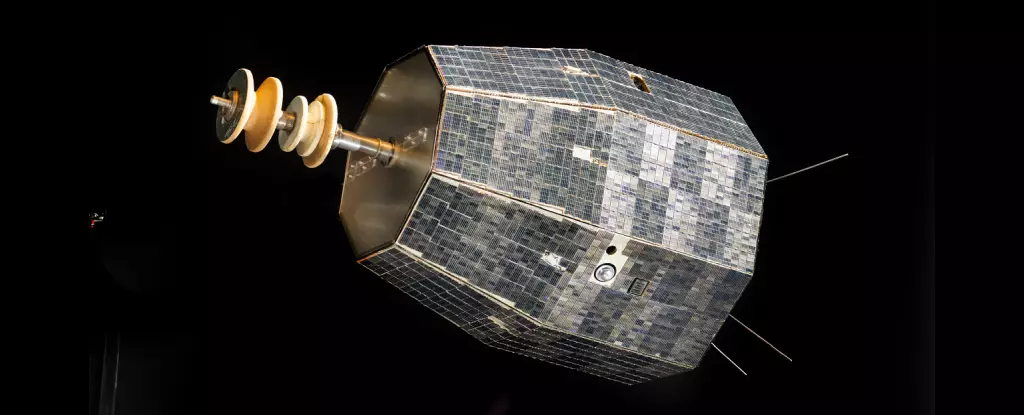Fast radio bursts (FRBs) have captivated astronomers and enthusiasts alike since their discovery. These ephemeral pulses of radio waves, which can often seem otherworldly in their origins, typically stem from incomprehensibly distant cosmic phenomena. However, the detection of an FRB on June 13, 2024, carried a twist that few could have anticipated—it originated not from the depths of the universe, but from a long-neglected NASA satellite, Relay 2, drifting silently in Earth’s orbit. This realization challenges our understanding of not only FRBs but also the Way we perceive the vast expanse of space littered with human-made objects.
The Unlikely Culprit: Relay 2
Relay 2’s origin story dates back to 1964, when it was designed to facilitate communications between ground stations and satellites. It operated for a brief period before being decommissioned in 1967, and since then, it has remained an inert relic of past technological triumphs. Its recent re-emergence into the spotlight demonstrates how remnants of human innovation can become sources of intriguing scientific revelations. According to research led by astronomer Clancy James and his team from Curtin University, the FRB came from the vicinity of this defunct satellite, located just 4,500 kilometers from Earth.
The implications of this revelation stretch far beyond mere curiosity. As we evolve technologically, the need for discernment between natural and anthropogenic signals becomes crucial. The misunderstandings caused by Earth-bound technology, such as bizarre signals produced by commonplace items like microwave ovens or trucks, illustrate the complexities of distinguishing between extraterrestrial phenomena and the noise generated by our own existence. The clutter of space junk could easily confuse instruments designed for deep-space exploration, presenting significant challenges for future discoveries.
Revealing Insights from a Faded Signal
The signal was detected by the Australian Square Kilometer Array Pathfinder (ASKAP), a key player in the ongoing exploration of radio astronomy. After receiving the enigmatic burst, researchers meticulously analyzed its characteristics, leading to the inevitable conclusion that it was linked to the Relay 2 satellite. This revelation forces us to reconsider how the remnants of our past can still contribute to our ongoing quest for knowledge.
But the burst itself raises more questions than answers. Researchers proposed two leading possibilities for the source of the discharge: an electrostatic discharge or a plasma event triggered by a micrometeoroid impact. While micrometeoroids are a known hazard, the researchers leaned towards the electrostatic discharge as the more likely scenario. As satellites traverse Earth’s geomagnetic fields, they may accumulate charges, resulting in voltage spikes that suddenly release energy in bursts—how fascinating that we might still be learning from a piece of technology over half a century old.
A Cautionary Tale of Space Debris
The predicament posed by space debris has become an increasingly relevant topic, particularly as instances of unforeseen bursts from defunct satellites bring attention to the issue. Scientists stress the importance of monitoring and understanding the discharge phenomena as space becomes crowded with technology abandoned long ago. The Relay 2 incident serves not only as an isolated discovery but as a potent reminder of the potential perils associated with electrostatic discharges in orbit.
In parallel, this incident underscores the necessity for improved techniques in detecting and attributing signals from a growing array of satellites in Earth’s vicinity. It offers a promising avenue for developing strategies to predict potential dangers from manmade objects—a critical step in safeguarding future endeavors in space exploration.
The Future of Celestial Communication
As science continues to push boundaries, the Relay 2 incident may lead researchers to rethink their strategies to monitor and decipher the signals emanating from satellites. The observational campaign of previous years provides a framework for future exploration, hinting at the existence of previously overlooked bursts that could aid in understanding the behavior of satellites and their environments.
In the realm of remote sensing, we may now stand on the brink of advancements that could enhance our ability to oversee and analyze such phenomena. This extraordinary union of old technology and modern-to-future research aspirations showcases how much we can learn from the past even as we chart our trajectory into the unknown.
Relay 2, once dangling in obscurity, has re-emerged as a vital piece of a larger puzzle. It compels us to evaluate not just what lies beyond our planet, but also what exists on the threshold of our very sky—a fascinating intertwining of technology, human ingenuity, and the cosmic dance of discovery.

